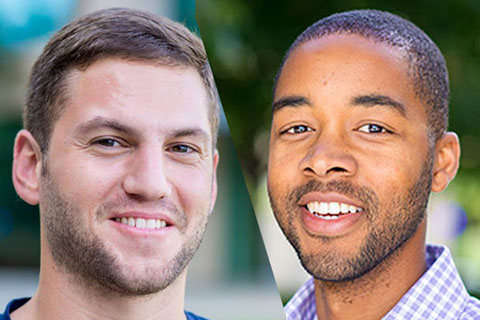‘Inclusive Making’ Helps Students Design for People with Disabilities

A college design course that takes a critical look at the field of ‘making” and includes partnerships between students and people with disabilities can promote accessibility in computing, according to new Northwestern University research.
The course, called Inclusive Making, serves as a preliminary blueprint for practitioners and researchers who want to adapt it for their own courses on accessible design, School of Education and Social Policy researchers Marcelo Worsley and David Bar-El wrote in the journal Computer Science Education and the International Journal of Child-Computer Interaction.
Making, a specific form of computing that connects digital and physical technologies, has been lauded for bringing novel tools and opportunities to non-traditional designers. During maker activities, learners use everything from craft materials, 3D printers, and laser cutters to microcontrollers.
Advocates posit that the hands-on approach helps students learn complex STEAM concepts; develop skills, and a failure-positive mindset. Increasingly, however, making has been criticized by researchers and practitioners for excluding non-dominant communities, including people with disabilities.
People with disabilities are often makers by necessity – adapting tools and their personal environments to negotiate their way in the world. Nevertheless, “the needs of people with disabilities aren’t a central consideration for many designers and companies, due to a lack of awareness or because they think it should be the responsibility of a small subset of the design community,” said Worsley, assistant professor of learning sciences and computer science.
Education also plays a role. Fewer than one percent of US computer science faculty report teaching accessibility course-wide, according to 2018 research.
To address these issues, Worsley designed the Inclusive Making course for upper level undergraduate and graduate students studying engineering, education, or both. The interdisciplinary class challenges students to read maker literature, experiment with maker technologies, and design a tool or activity that solves an accessibility problem in making.
Students also use a critical disability studies approach as they analyze making, by discussing where the promises of making fall short, especially for people with disabilities. Critical disability studies questions how society frames disabilities and the ways institutions dis-able people through political, cultural, and material actions.
“Courses on accessibility address important societal and individual needs that are currently not met by computer science curricula,” Worsley said. “By including critical discussions of the field and authentically collaborating with the community, we can develop better designs, and change perceptions of what is valuable in computing experiences.”
Learning Accessibility
The quarter-long Inclusive Making class brings together students from computer science, communication, learning sciences, and design. It meets weekly for three hours and features a mix of lectures, group discussions, and class activities. Outside of class, students are encouraged to volunteer at an organization that provides accessibility-related resources, visit two or more maker spaces if possible, and talk with someone who identifies as having an impairment.
In pre-enrollment surveys, some students said they were drawn to the course because of their interests in social justice, equity and technology. Others wanted to work with a diverse group of students and organizations or learn how to design inclusive and accessible software solutions. And some identified as having disabilities.
“Most computer science students say they don’t learn enough about accessibility, if at all,” Bar-El said. “Some entered computer science to make an impact. But they’re just learning programming and theory and tech -- it's not necessarily geared towards a particular social impact.”
Students self-selected into the course. But even those who did, had experiences that changed their perspective, the researchers wrote. “These students may have already been sympathetic to the needs of people with disabilities, but they still challenged many prejudicial assumptions through their experience in the course,” wrote Worsley and Bar-El.
One group, for example, initially questioned whether their volunteer visit–eating lunch with people with disabilities–was a good use of their time. Afterwards, a student with significant experience working with different modes of technology reflected on talking with Peter, a blind resident at the partner organization:
Peter showed us how voice assists works on the iPhone. This was a real eye opener…Peter navigated the phone very seamlessly. He then updated all our phones to make sure that we’re on the latest version…The visit left me feeling inspired.”
This underscores the need for accessibility issues to be more broadly addressed in computer science, Worsley and Bar-El wrote. “Inclusive Making has addressed this first step. As we design courses that apply a critical lens to accessibility and computer science, we can prepare future generations to be more inclusive and forward-thinking in how they practice computer science.”
Worsley directs the Technological Innovations for Inclusive Learning and Teaching (TILT) Lab at Northwestern. In 2019, he received the 2019 Daniel Linzer Award for Faculty Excellence in Diversity and Equity for his innovative teaching and efforts to center marginalized identities within STEM.
Bar-El is a PhD candidate in Learning Sciences. His work has been published in the International Journal of Child-Computer Interaction, Computer Science Education, and the Interaction Design and Children Conference.